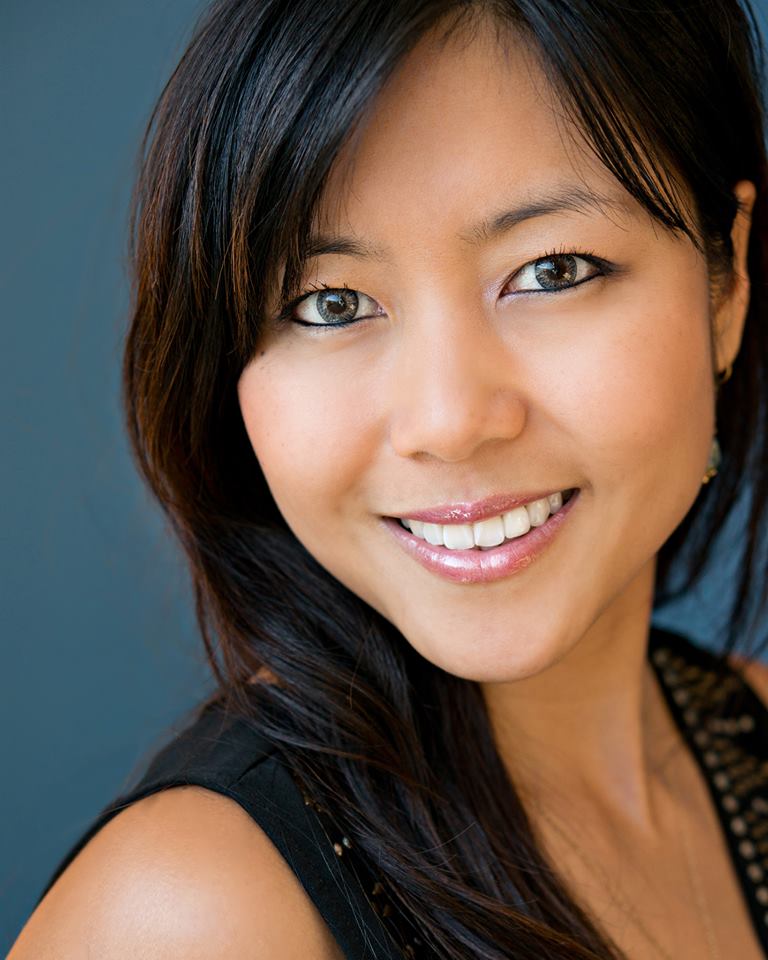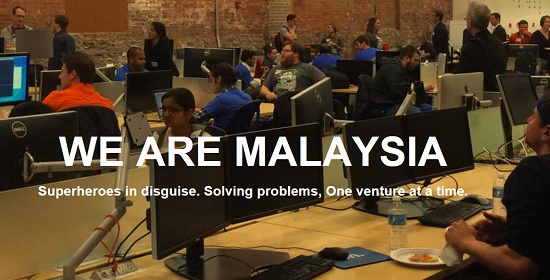CEO Cheryl Yeoh lays out MaGIC’s ingredients: Page 2 of 3
By A. Asohan September 12, 2014
The MaGIC Academy

MaGIC’s second core activity revolves around filling in the gaps, which would involve two programmes: The MaGIC Startup Academy and the Asean Accelerator.
“One thing I’ve noticed is that people here think that you need to raise funds to start,” says Yeoh.
“They have an idea, and they think they need to get grants or raise funds but in actual fact, with today’s technology, you can bootstrap your startup and test apps with very little money,” she says.
The MaGIC Startup Academy will be a year-long, workshop-driven initiative. The agency is aiming to run about three workshops a week, involving successful local, regional and US entrepreneurs. This would arm entrepreneurs with the skills and the training so that they can test products and prototypes.
Among those slated to deliver workshops is US entrepreneur Neil Patel, the ‘growth hacking’ and digital marketing expert who will be at MaGIC in October to talk about digital marketing.
The MaGIC Startup Academy will launch on Oct 15 with a five-day programme, and on the third day (Oct 17), MaGIC will bring in 15 to 20 regional and international venture capitalists to hear pitches.
“It’s not really a conference. Malaysia has a lot of events where you pay a lot of money to get speakers to come in and talk, and you get inspired – and then you go home, and it’s ‘So what? What’s next?’ ” says Yeoh.
“We want to avoid that. The five-day MaGIC Startup Academy launch is all about workshops, ranging from two and four hours, to three days, or even four days, where you will get to learn an actual skill – whether it’s building a prototype or design thinking and digital marketing.
“There will be a theme every day, and on the fifth day, we’re ending with a startup career fair where we’re inviting all startups to set up booths,” she says, adding that the other big problem for startups is hiring talents.
“The MaGIC Startup Academy is meant to prep talents to be hireable by startups,” she declares.
This sounds very much like what MDeC was doing with its Knowledge Development Centre (KDC). Wouldn’t this be a duplication of effort here?
Yeoh doesn’t think so. She says that she has spoken with Muhammad Imran Kunalan Abdullah, head of the Talent Division at MDeC, and determined that his programmes are more geared towards filling the skills and talent gaps in large ICT corporations and multinationals.
“KDC focuses more on skills in .Net [the Microsoft software framework], Oracle, SAP, Java, C++ and so on – more suited towards large company IT jobs, not startups,” she argues.
“What is missing, we’ve found, is talents for startups, which requires slightly different skills. In Malaysia, for example, UX (user experience) is not being taught in schools. Project management, digital marketing and Ruby on Rails (an open source web application framework) are not being taught in schools.
“These are the skills we’re teaching entrepreneurs,” she says. “That’s a No 1 gap, and we’re trying to provide that education.”
Asean Accelerator
Another gap that MaGIC hopes to fill is that of accelerators, which Yeoh believes there is a lack of, while acknowledging programmes like 1337 Accelerator.
“The rest are all incubators. There’s a huge misunderstanding between what an accelerator is and what an incubator is,” she says.
“An accelerator comes with funding, and is a cohort-driven programme. It’s very selective,” she says, adding that incubators work on a landlord model – renting space and utilities, with ad hoc mentorship.
Thus MaGIC will kick off the Asean Accelerator in the first half of 2015.
“We’re looking to open doors because what we really need to create in Malaysia is this critical mass. Again, coming back to the point that there’s one startup here, one startup there; an office here and an office there – we need everyone to come and gather around MaGIC as a hub or a ‘capital’,” Yeoh says.
“We also want to open doors for Asean to come into Malaysia – especially since Malaysia is hosting the Asean Leadership Summit next year,” she adds.
“We’re looking to fund about 150 startups here, about 50 of them social enterprises,” says Yeoh, reiterating that of the RM70 million (US$22 million) that the Malaysian Government has allocated to MaGIC, RM20 million has been set aside for social enterprises.
The Asean Accelerator is modelled after StartUp Chile, which in three years – and spending only US$35 million, according to Yeoh – has put the country on the map and acknowledged as one of the top 20 startup ecosystems in the world.
StartUp Chile was conceptualised as a seed accelerator in 2010 and launched the next year. Startups are invited into the country for four-month programme, and are given US$40,000 in seed money which they spend in Chile as they build their products.
“We’re going to visit them in November, and have been talking to them for the past six months,” says Yeoh.
“They’re been very helpful – they’ve shared all their metrics, and the lessons they learned. For example, they didn’t prepare the local talent, and after the first six months, startups couldn’t hire, so they left.
“The other was follow-on funding – after the seed fund of US$40,000, many startups couldn’t raise money, so they left.
“That’s why we’re creating the MaGIC Startup Academy – to support the talent. And that’s why we’re talking to private VCs and funds to come to our Demo Day to make sure that that linkage happens,” she adds.
Regional and international exposure
One of the key thrusts of the Asean Accelerator is to position Malaysia as a strategic launchpad for startups in South-East Asia and its 600 million population.
“I can talk the whole day about why Malaysia,” says Yeoh, noting that the country’s 30 million population makes it a fair-sized testbed market.
“Malaysia is a very good launchpad for any company wanting to expand regionally because we’re English-speaking, and we have a highly social customer base very willing to try out new products.
“We also speak Bahasa Malaysia, which is not too far from Bahasa Indonesia, and we’re next door to Indonesia which has a population of about 300 million and a market which a lot of VCs are interested in.
“And we’re a lot cheaper. If you look at South-East Asia, only the governments of Malaysia and Singapore are so supportive of entrepreneurs and are dedicating so many resources towards entrepreneurship.
“Singapore may be very attractive, but it’s very expensive, with its currency at almost the same rate as the US dollar. Its five million people makes it a very small market. It’s also a very affluent market, which is good if you’re targeting the luxury market, but beyond that, is not a true reflection of South-East Asia.
“As I was thinking of doing this Asean Accelerator, I really could not think of a better place to do it than in Malaysia,” she adds.
The third part of MaGIC’s ‘Gap-Fillers’ thrust is providing regional and global exposure – that is, to increase the number of successful regional and global Malaysian startups.
“But if our entrepreneurs don’t go out of the country, how are they going to learn of the world’s problems?” says Yeoh.
“So in November, we’re taking 50 entrepreneurs to Stanford University for a two-week programme where they will be trained by Stanford professors and seasoned entrepreneurs from Silicon Valley.
“At the end of the programme, they will pitch to a panel of actual VCs to give them feedback on their startups,” she says.
MaGIC is also talking to technology blogs like e27 and Tech in Asia, which hold startup and pitching events across the region, to help Malaysian-based entrepreneurs who want to expand to these other markets.
Entrepreneur stories

Finally, the Story-Tellers portion is just about success stories to inspire people, says Yeoh, noting DNA has documented a lot of them.
“We want to create success stories that are searchable, so it’s like a directory of the successful entrepreneurs in Malaysia.
“We want to tell the emotional part of the journey, not just stories of them raising funds and who they raised it from, but why they created this product, and how this product impacted and changed the lives of people.
“We want to tell those stories too,” she says.
One initiative under the MaGIC’s ‘Connectors’ core activity also overlaps with storytelling. The agency has launched WeAreMY.com (pic above) which profiles community leaders, engineers, designers, and others from the ecosystem.
“We want to profile entrepreneurs so that everyone knows who’s who in the community,” says Yeoh.
Next Page: Funding and other missing pieces


